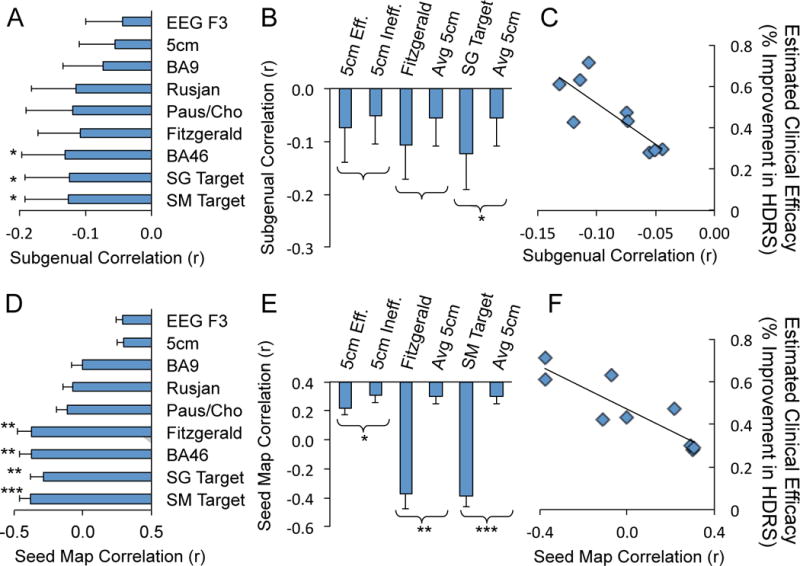Figure 4.

Replication of principal findings in patients with major depressive disorder. Time course correlations are shown between regions of interest in the dorsal lateral prefrontal cortex (DLPFC) and the subgenual seed region (A–C) or the efficacy-based seed map (D–F). Similar to normal subjects, there is an anticorrelation between TMS targets in the DLPFC and the subgenual (A). Paired comparisons of effective versus less effective DLPFC targets show the same trend as normal subjects and a significant difference between the optimized DLPF target identified using the subgenual seed region (SG Target) and the average 5 cm target (B). Also similar to normal subjects, there is a strong relationship between estimated clinical efficacy (using the Herbsman equation) and anticorrelation with the subgenual (C; r2 = 0.66, P<0.005). Using the efficacy-based seed map rather than the small subgenual seed region produces similar but more robust results including examination of regional time course correlations (D), paired comparisons (E), and the correlation between functional connectivity and estimated clinical efficacy (F; r2 = 0.76, P<0.001). Labels for DLPFC ROIs are as in Figures 1 and 2 with the addition of optimized DLPFC targets identified in normal subjects using the subgenual seed region (SG Target) and the efficacy-based seed map (SM Target). *P<0.05, **P<0.001, ***P<10−4.
